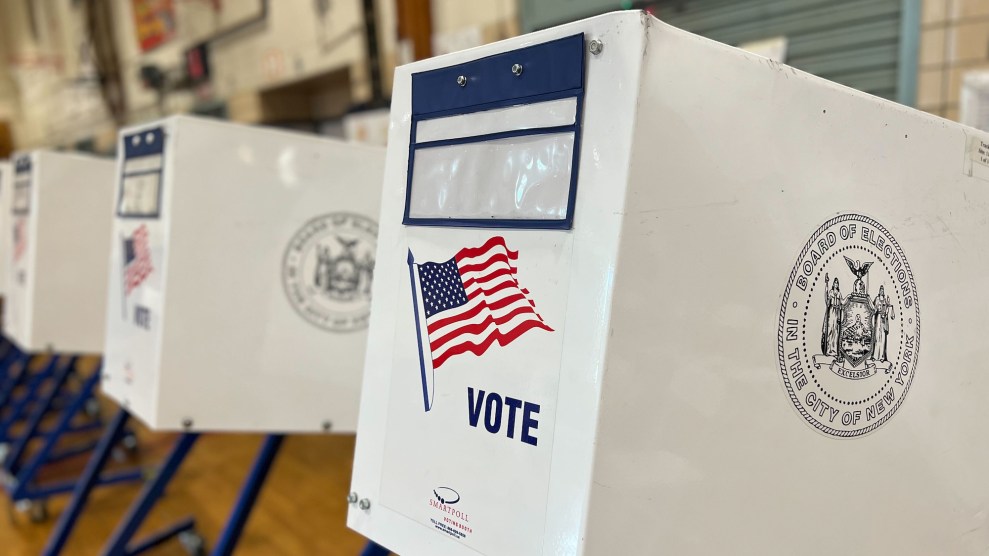Enough momentum has been built against America’s faulty voting systems to “secure” the systems by 2008, the New York Times reports. By “secure,” we primarily mean adding paper trails (paper rolls that voters can check before they leave but that stay in the booth).
That’s no a panacea. Models such as Diebold’s TSx make voters to go on a wild goose chase to find their vote record. The scroll is covered by an opaque brown door, making the paper trail if not undetectable, then difficult to find. Three in four voters didn’t check the paper trail after voting. One study showed Cleveland’s paper trail didn’t even match the votes. Bev Harris told us, “It’s like if you ask a 6-year-old to do the dishes and he leaves gobs of food on the plates. It’s almost unusable…. the paper trail is not worth the paper it’s printed on, because nobody uses it and nobody can see it.”
One snag is voting machine companies lobbying against making their software public. Another is the expense. The $150 million proposed in federal aid for the machines is not enough to pay for the changes. That total, by the way, is $50 million less than we spend in Iraq every day. Isn’t it worth more to safeguard voting? Not just because it happens to be the foundation of our democracy, but also because, in a roundabout way, insecure ballots got us into the war in the first place?
— April Rabkin















